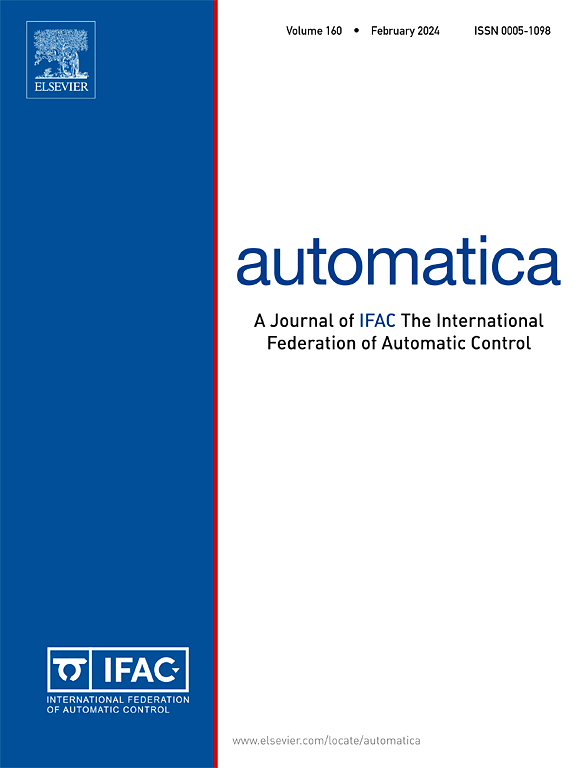控制器整定规则的逆监督学习
IF 4.8
2区 计算机科学
Q1 AUTOMATION & CONTROL SYSTEMS
引用次数: 0
摘要
在本技术公报中,我们提出了一种sim2real方法用于数据驱动的控制器调谐,利用数字孪生来生成输入输出数据和围绕标称参数值的合适控制器。我们使用先进的神经网络架构(包括WaveNet序列模型)建立了一个直接逆监督学习框架,以学习将输入输出数据映射到控制器参数的调谐规则。该方法通过逆监督学习对调节规则进行元学习,实现控制器的自动重新校准,有效避免了机器学习模型的人为干预。通过各种神经网络架构的数值模拟证明了这种方法的优点。本文章由计算机程序翻译,如有差异,请以英文原文为准。
Inverse supervised learning of controller tuning rules
In this technical communique, we present a sim2real approach for data-driven controller tuning, utilizing a digital twin to generate input–output data and suitable controllers around nominal parameter values. We establish a direct inverse supervised learning framework using advanced neural network architectures, including the WaveNet sequence model, to learn a tuning rule that maps input–output data to controller parameters. This approach automates controller re-calibration by meta-learning the tuning rule through inverse supervised learning, effectively avoiding human intervention via a machine learning model. The advantages of this methodology are demonstrated through numerical simulations across various neural network architectures.
求助全文
通过发布文献求助,成功后即可免费获取论文全文。
去求助
来源期刊

Automatica
工程技术-工程:电子与电气
CiteScore
10.70
自引率
7.80%
发文量
617
审稿时长
5 months
期刊介绍:
Automatica is a leading archival publication in the field of systems and control. The field encompasses today a broad set of areas and topics, and is thriving not only within itself but also in terms of its impact on other fields, such as communications, computers, biology, energy and economics. Since its inception in 1963, Automatica has kept abreast with the evolution of the field over the years, and has emerged as a leading publication driving the trends in the field.
After being founded in 1963, Automatica became a journal of the International Federation of Automatic Control (IFAC) in 1969. It features a characteristic blend of theoretical and applied papers of archival, lasting value, reporting cutting edge research results by authors across the globe. It features articles in distinct categories, including regular, brief and survey papers, technical communiqués, correspondence items, as well as reviews on published books of interest to the readership. It occasionally publishes special issues on emerging new topics or established mature topics of interest to a broad audience.
Automatica solicits original high-quality contributions in all the categories listed above, and in all areas of systems and control interpreted in a broad sense and evolving constantly. They may be submitted directly to a subject editor or to the Editor-in-Chief if not sure about the subject area. Editorial procedures in place assure careful, fair, and prompt handling of all submitted articles. Accepted papers appear in the journal in the shortest time feasible given production time constraints.
 求助内容:
求助内容: 应助结果提醒方式:
应助结果提醒方式:


